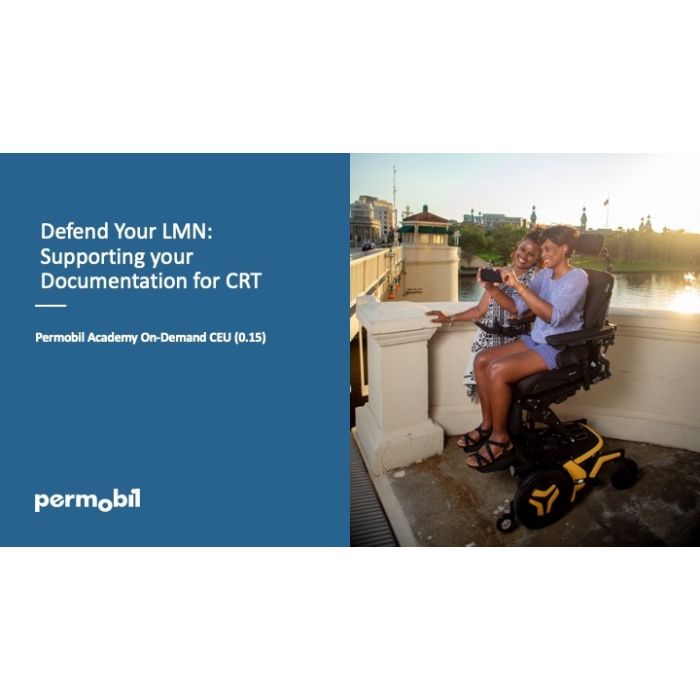Defend Your LMN: Supporting Your Documentation for Complex Rehab Technology
COURSE DESCRIPTION: This 90 minute course will highlight the patient presentation and justifications that are necessary to support documentation for complex rehabilitation technology (CRT).
Education Level = Intermediate, Credit = 0.15 CEU/ 1 CCU
AOTA Category: OT Service Delivery; Professional Issues; CEU(s)/Contact Hour(s): 0.15 AOTA CEUs/1.5 Contact Hour
State PT Approval: This course has been approved by the Maryland State Board of Physical Therapy Examiners for .15 CEUs. Approval for this course expires 12/3/2024. Please be sure to complete this course by that date.
Instructional Method: Recorded on-line asynchronous lecture with supporting video demonstration
| Course Outline |
|
||||||||||||||||
|---|---|---|---|---|---|---|---|---|---|---|---|---|---|---|---|---|---|
| Who Enrolls | This program is designed for Occupational Therapists, Occupational Therapy Assistants, Physical Therapists, Physical Therapist Assistants, Assistive Technology Professionals, and Medical Suppliers/Providers | ||||||||||||||||
| Instructor Information | Jennith Bernstein, PT, DPT, ATP: Jennith has been a practicing PT for 13 years and spent the last 10 years at a model SCI center (Shepherd Center) in Atlanta, Georgia. Jennith completed her Masters in Physical Therapy at North Georgia College & State University and return to complete her transitional DPT at University of Texas Medical Branch in 2014. While at Shepherd Center, Jennith, initiated a “Seating Champion” program to improve the inpatient and day program clinicians understanding of complex seating, pressure management and skin protection as well as research reviews, advanced programming and adjustments. She was also part of a center wide multidisciplinary focus group for reduction of hospital acquired skin breakdown. Jennith has served as a volunteer teacher at the Universidad Mariano Galvez in Guatemala, instructing spinal cord injury curriculum as well as seating and mobility. Jennith has presented at national and international conferences such as RESNA, ISS, Expo Ortopedica, and the APTA NEXT conference. Jennith joined Permobil as a Clinical Education Manager in 2016. |


